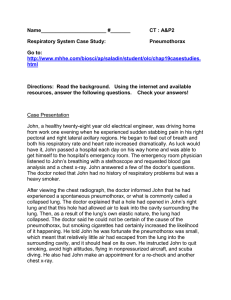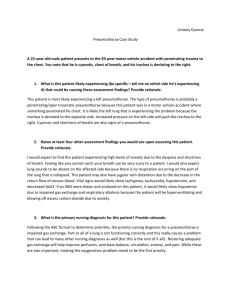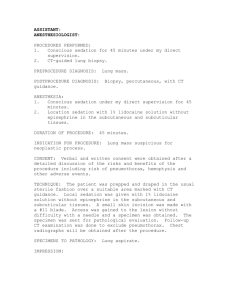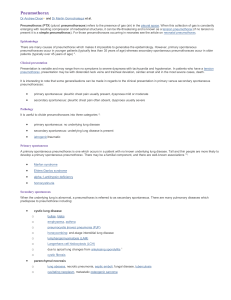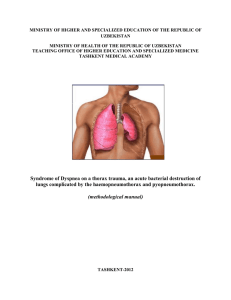Case Study: Pneumothorax
advertisement
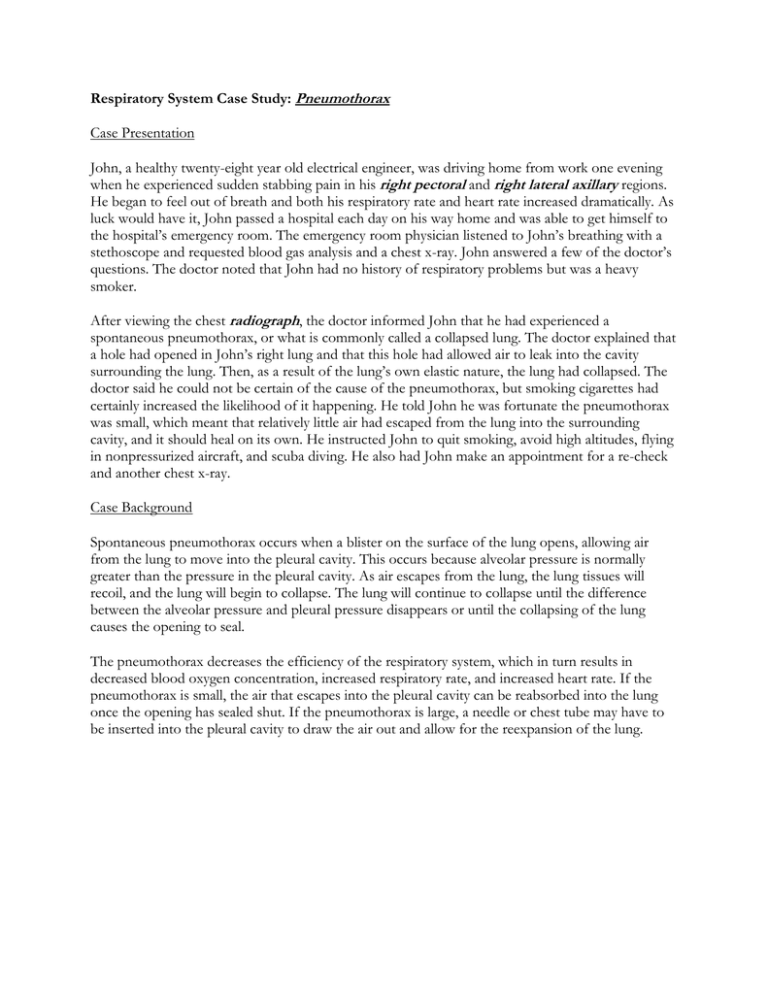
Respiratory System Case Study: Pneumothorax Case Presentation John, a healthy twenty-eight year old electrical engineer, was driving home from work one evening when he experienced sudden stabbing pain in his right pectoral and right lateral axillary regions. He began to feel out of breath and both his respiratory rate and heart rate increased dramatically. As luck would have it, John passed a hospital each day on his way home and was able to get himself to the hospital’s emergency room. The emergency room physician listened to John’s breathing with a stethoscope and requested blood gas analysis and a chest x-ray. John answered a few of the doctor’s questions. The doctor noted that John had no history of respiratory problems but was a heavy smoker. After viewing the chest radiograph, the doctor informed John that he had experienced a spontaneous pneumothorax, or what is commonly called a collapsed lung. The doctor explained that a hole had opened in John’s right lung and that this hole had allowed air to leak into the cavity surrounding the lung. Then, as a result of the lung’s own elastic nature, the lung had collapsed. The doctor said he could not be certain of the cause of the pneumothorax, but smoking cigarettes had certainly increased the likelihood of it happening. He told John he was fortunate the pneumothorax was small, which meant that relatively little air had escaped from the lung into the surrounding cavity, and it should heal on its own. He instructed John to quit smoking, avoid high altitudes, flying in nonpressurized aircraft, and scuba diving. He also had John make an appointment for a re-check and another chest x-ray. Case Background Spontaneous pneumothorax occurs when a blister on the surface of the lung opens, allowing air from the lung to move into the pleural cavity. This occurs because alveolar pressure is normally greater than the pressure in the pleural cavity. As air escapes from the lung, the lung tissues will recoil, and the lung will begin to collapse. The lung will continue to collapse until the difference between the alveolar pressure and pleural pressure disappears or until the collapsing of the lung causes the opening to seal. The pneumothorax decreases the efficiency of the respiratory system, which in turn results in decreased blood oxygen concentration, increased respiratory rate, and increased heart rate. If the pneumothorax is small, the air that escapes into the pleural cavity can be reabsorbed into the lung once the opening has sealed shut. If the pneumothorax is large, a needle or chest tube may have to be inserted into the pleural cavity to draw the air out and allow for the reexpansion of the lung.




